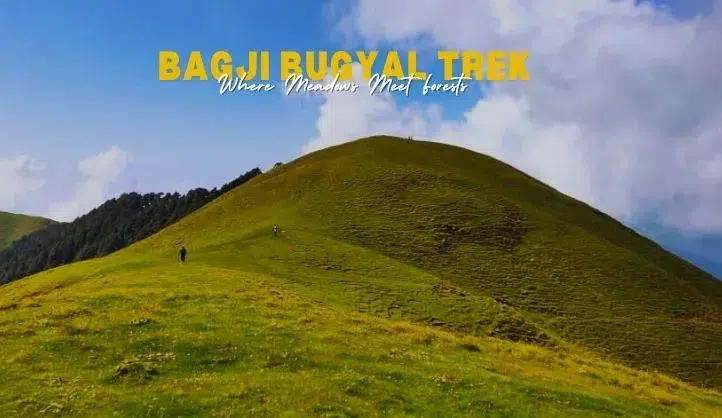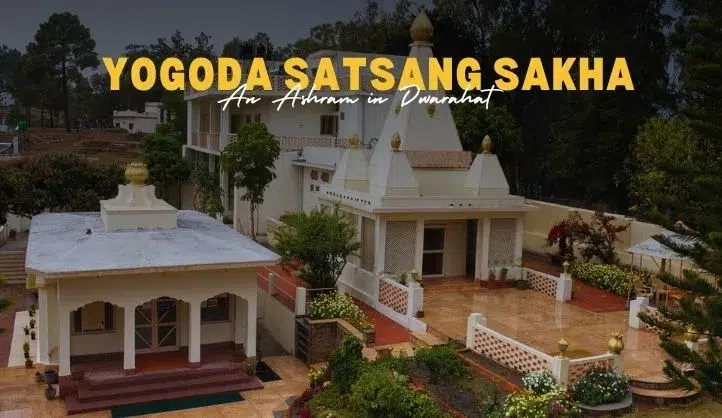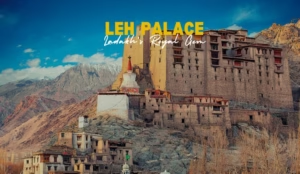Embarking on the Kedarnath Yatra from Haridwar is an enchanting spiritual journey that takes pilgrims through the picturesque landscapes of the Himalayas, leading them to the revered Kedarnath Temple nestled in the heart of Uttarakhand, India. This divine pilgrimage is not just a physical voyage; it’s a soulful expedition that offers devotees a chance to seek blessings, introspect, and connect with their inner selves.
The Sacred Route: A Glimpse of the Journey
Departure from Haridwar

The journey begins with a sense of anticipation and devotion as pilgrims gather in Haridwar, a significant holy city in India. It’s a city where the Ganges River emerges from the mountains, and the atmosphere is charged with spiritual energy.
Rishikesh: Gateway to the Himalayas
Rishikesh, situated along the Ganges, serves as a gateway to the Himalayan foothills. It’s a place of yoga, meditation, and tranquility. Pilgrims often take a moment to soak in the serene surroundings before proceeding.
Guptkashi: The Hidden Gem
Guptkashi, a lesser-known gem on the route, is home to the ancient Vishwanath Temple. It’s a place of immense significance and offers a chance for pilgrims to reflect on the divine journey ahead.
Gaurikund: The Trek Commences
The pilgrimage transforms into a trekking adventure from Gaurikund onwards. The journey is not just a physical one; it’s a test of determination and devotion.
The Majestic Kedarnath Temple

Amidst the snow-capped peaks and pristine landscapes lies the Kedarnath Temple, dedicated to Lord Shiva. The sight of the temple instills a sense of awe and reverence among pilgrims.
Best Time to Visit Kedarnath
The best time to visit Kedarnath, a sacred Hindu pilgrimage site located in the Uttarakhand state of India, is influenced by weather conditions, accessibility, and the annual opening and closing dates of the temple. Here are the detailed points about the best time to visit Kedarnath:
- Summer (May to June):
- This is the most popular time to visit Kedarnath due to the pleasant weather and clear pathways.
- The temperature ranges from 5°C to 18°C, making it ideal for outdoor activities and trekking.
- The Kedarnath Temple opens during this time, marking the start of the pilgrimage season.
- The snow begins to melt, revealing the scenic beauty of the region.
- Monsoon (July to September):
- This period experiences heavy rainfall and the risk of landslides, making it less favorable for travel.
- The region becomes prone to flash floods and road blockages due to the unpredictable weather.
- Pilgrims often avoid visiting during this time due to safety concerns and difficult travel conditions.
- Autumn (October to November):
- The post-monsoon period offers clear skies and cooler temperatures.
- The foliage turns vibrant with hues of red and gold, creating picturesque landscapes.
- The closing date of the Kedarnath Temple, usually around Diwali (October/November), marks the end of the pilgrimage season.
- Winter (December to April):
- Kedarnath experiences heavy snowfall during winter, and the region remains covered in snow.
- The temple remains closed during these months due to extreme weather conditions.
- Trekking routes are inaccessible due to heavy snow accumulation.
- Only experienced trekkers and mountaineers venture to Kedarnath during this time for the challenge and adventure it offers.
Wandersky Kedarnath Yatra Package
- Hotel
- Tour Guide
- 03N/04D
Breakfast, Dinner & Transportation (Bolero)
- EX – Haridwar to Haridwar
- 3* Hotel Stay on Quad Sharing (Except Kedarnath Dham)
- Min. 07 Pax Required
- ₹ 10,500/- Person
Kedarnath Yatra Package – Group Tour
- Hotel
- Tour Guide
- 07N/08D
Breakfast, Dinner & Transportation (TT)
- EX – Mumbai to Mumbai
- Standard Hotel Stay on Quad Sharing (Except Kedarnath Dham)
- Min. 25 Pax Required
- ₹ 15,000/- Person
Packing Essentials For Kedarnath

Packing for a trip to Kedarnath requires careful consideration of the weather conditions, terrain, and the requirements of a pilgrimage to a high-altitude destination. Here’s a comprehensive packing list:
Clothing:
- Layered Clothing: Due to the varying temperatures, pack a mix of lightweight and warm clothing that you can layer. This includes t-shirts, long-sleeve shirts, sweaters, and a warm jacket.
- Windproof Jacket: A windproof and waterproof jacket is essential to protect yourself from rain and cold winds.
- Warm Innerwear: Thermal or warm innerwear helps retain body heat in colder temperatures.
- Trekking Pants: Comfortable, moisture-wicking pants that provide ease of movement for trekking.
- Woolen Socks: Keep your feet warm and dry with woolen socks.
- Gloves and Hat: Carry gloves and a warm hat to protect your extremities from the cold.
Footwear:
- Trekking Shoes: Sturdy, waterproof trekking shoes with good grip for uneven terrain.
- Extra Shoes: A pair of comfortable, lightweight shoes for wearing around the camp or lodge.
Accessories:
- Backpack: A durable backpack with a rain cover to carry your essentials during the trek.
- Sunglasses: Protect your eyes from the glare of snow and sunlight.
- Sun Hat/Cap: Shield yourself from the sun’s rays.
- Trekking Poles: Helpful for maintaining balance and reducing strain while trekking.
Personal Essentials:
- Medications: Any prescribed medications, along with a basic first aid kit.
- Toiletries: Toothbrush, toothpaste, soap, hand sanitizer, and other personal hygiene items.
- Sunscreen: Protect your skin from the sun’s strong rays at high altitudes.
- Lip Balm: Prevent chapped lips in cold and dry climates.
- Moisturizer: Keep your skin hydrated in the cold and dry weather.
- Insect Repellent: Especially important if you plan to spend time outdoors.
Miscellaneous:
- Identification: Carry your identification documents, permits, and necessary travel papers.
- Cash: Carry sufficient cash as ATMs might not be readily available in the region.
- Mobile Charger and Power Bank: Ensure your devices are charged, as electricity availability may be limited.
- Water Bottle: Stay hydrated by carrying a reusable water bottle.
- Snacks: High-energy snacks like nuts, energy bars, and chocolates for quick nourishment.
Optional:
- Camera: Capture the breathtaking views and moments during your journey.
- Binoculars: Enhance your view of the surrounding landscapes and wildlife.
- Reading Material: Books, magazines, or e-readers for entertainment during downtime.
Remember that packing light yet adequately is key, as you’ll be trekking and carrying your belongings. Adjust the list according to the specific season and weather conditions during your travel dates.
The Spiritual Significance: Connecting with the Divine

A Test of Faith
The Kedarnath Yatra isn’t merely about reaching a destination; it’s about unwavering faith. The arduous journey mirrors life’s challenges, teaching pilgrims to persevere.
Embracing Simplicity
As pilgrims traverse through rugged terrains, they learn the value of simplicity. This journey strips away material comforts, allowing a profound connection with the divine.
Renewal and Rejuvenation
The pure air, the serene landscapes, and the spiritual aura work together to cleanse the mind, body, and soul. Pilgrims often report a sense of renewal and rejuvenation.
Self-Reflection in Solitude
The solitude of the mountains provides pilgrims with an opportunity for introspection. Away from the hustle of daily life, they can reflect on their actions and aspirations.
The Experience of a Lifetime

Communion with Nature
The Kedarnath Yatra is a communion with nature in its purest form. The lush greenery, gushing rivers, and towering mountains create an awe-inspiring backdrop for the spiritual quest.
Camaraderie and Bonds
The journey is often undertaken in groups, fostering a sense of camaraderie. Pilgrims from diverse backgrounds come together, sharing stories and forming lasting bonds.
Divine Darshan
The pinnacle of the pilgrimage is the darshan (divine sighting) of Lord Kedarnath. The glimpse of the deity is believed to absolve devotees of their sins and grant them blessings.
Conclusion
The Kedarnath Yatra from Haridwar is more than a physical journey; it’s a transformative experience that touches the heart, mind, and soul. It’s a reminder that the path to the divine is often challenging, yet profoundly rewarding. As pilgrims return from this sacred journey, they carry with them a renewed spirit, a sense of accomplishment, and the blessings of Lord Shiva.
FAQs – Kedarnath Yatra from Haridwar
- How long is the Kedarnath Yatra from Haridwar? The duration of the journey varies depending on the route taken, but it usually takes around 7 to 10 days to complete the round trip.
- Is the trekking route difficult? Yes, the trekking route involves challenging terrains and steep ascents. It’s advisable to be physically prepared before embarking on the journey.
- Are there accommodation options along the way? Yes, there are various accommodation options available at different points of the journey, catering to different budgets and preferences.
- When is the best time to undertake the yatra? The best time to undertake the Kedarnath Yatra is during the summer months of May to June and the early autumn months of September to October when the weather is pleasant.
- Is the Yatra open to people of all faiths? Yes, the Kedarnath Yatra is open to people of all faiths. It’s a journey that welcomes anyone seeking a spiritual experience and a connection with nature.








